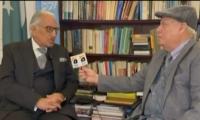The PTI government made various efforts to attract foreign investment in Pakistan during its first two years in power. High-level delegations and dignitaries from Saudi Arabia, China, Turkey, Malaysia, the UAE and Qatar visited Pakistan from 2018 to 2019.
These countries signed multiple memorandums of understanding (MOUs) and agreements worth billions of dollars with Pakistan to invest in petrochemical, agriculture, infrastructure development, tourism, renewable energy, and many other sectors.
For instance, Saudi Arabia agreed to invest $20 billion in various projects, including a $10 billion oil refinery and petrochemical complex in Gwadar. China pledged to enhance its cooperation under the China-Pakistan Economic Corridor (CPEC) and support Pakistan’s industrialization and social-sector development. Turkey expressed its interest in investing in Pakistan’s automobile and tourism sectors. Malaysia signed five MOUs with Pakistan to expand bilateral trade and investment in diverse areas such as telecommunication, technology, and halal food.
The UAE announced a $6.2 billion package for Pakistan, including $3 billion in balance of payments support and $3.2 billion in deferred oil payments. Qatar promised to invest $3 billion in various sectors and increase its liquefied natural gas (LNG) exports to Pakistan.
However, despite political support from the highest level, those MOUs never materialized. Experts attribute this situation to weak follow-up, bureaucratic hurdles, procedural delays, and lack of coordination among different government agencies and ministries. For example, the Saudi oil refinery project in Gwadar faced multiple challenges, such as security issues, land acquisition, environmental concerns, and feasibility studies. The CPEC projects also slowed down due to disagreements over financing terms, power tariffs, tax exemptions, and security situation.
Turkish investment in the automobile sector was hampered by the lack of a clear policy framework and incentives for new entrants. Malaysian investment in the telecommunication sector was stalled by regulatory hurdles and legal disputes faced by the existing Malaysian companies operating in Pakistan. The UAE package for Pakistan was partially delivered as only $2 billion out of $3 billion was disbursed as a balance of payment support. The deferred oil payments facility was suspended after eight months due to falling oil prices. Qatari investment in various sectors was also delayed due to the Covid-19 pandemic and the changing regional dynamics.
Another factor that irks friends of Pakistan is the lack of policy consistency and continuity. For instance, Saudi Arabia asked Pakistan to repay $1 billion from the $3 billion loan it had given earlier. Reportedly, Saudi Arabia was displeased with some inappropriate remarks made by a high-ranking individual in Pakistan. China also paused some of the projects in Pakistan as it was concerned about the security situation. The UAE also had some reservations about Pakistan’s stance on regional issues such as Yemen and Iran. Qatar also had some diplomatic tensions with Pakistan over the Afghan peace process and the recognition of the Taliban regime.
The situation got further aggravated when, amidst political instability in Pakistan, its friends adopted a ‘wait and see’ approach. Their reluctance to give financial assurances to Pakistan until they get clarity on what would happen next on its political front had in turn stalled Pakistan’s IMF programme. The thinking has been that the IMF will not release the next loan tranche until it receives specific financial assurances from these countries.
The examples above show how procedural barriers, lack of coordination, and perceived inconsistencies in policies can adversely affect Pakistani interests. However, the initiatives that addressed these issues were successful. Here are some examples.
One example is Pakistan’s response to Covid-19. The delta variant of the coronavirus created havoc in India, but Pakistan was able to contain the losses to the economy and human lives. This was largely due to the mechanism of the National Command and Operation Centre (NCOC) which was jointly steered by the civil and military leadership. It monitored the situation, made decisions, and implemented policies to control the spread of the virus.
The NCOC also coordinated with provincial governments to ensure the availability of resources such as hospital beds, ventilators, and personal protective equipment (PPE) where they were needed most. Moreover, it oversaw the implementation of measures that proved vital to slow down the spread of the virus, such as lockdowns, social distancing, mask-wearing, and most importantly, vaccination.
Another example is Pakistan’s graduation from the grey list of the Financial Action Task Force (FATF). Pakistan successfully complied with one of the toughest action plans of the FATF and the Asia Pacific Group. Behind this accomplishment was a civil-military coordination mechanism: an FATF core cell at the GHQ. This cell comprised representatives from various ministries, departments, and agencies involved in the AML/CFT regime and ensured a coordinated and synchronized compliance with all action points in a timely manner.
The NCOC and the FATF core cell, jointly steered by civil and military leadership, acted as convenient ‘single windows’ for addressing the challenges related to Covid-19 and the FATF grey list. If Pakistan had a similar mechanism to follow up on investment and economic partnerships – MOUs/agreements – some of them could have been successfully implemented by now.
Keeping that in mind, in July 2022, the Sustainable Development Policy Institute (SDPI) proposed to form an economic security council (ESC) comprising civil and military leadership to address the economic challenges and complexities faced by Pakistan. The SDPI’s recommendation was that all stakeholders in the council should formulate and facilitate the implementation of a five-year economic roadmap (a charter of economy) that covers key economic challenges facing Pakistan.
It is heartening to note that the leadership of two major political parties – the PMLN and the PPP – is talking about a charter of economy. While agreeing to such a charter in the run-up to general elections may not be politically easy, the recently taken initiative to form the Special Investment Facilitation Council (SIFC) is undoubtedly a step in the right direction.
The stated objectives of the SIFC are to address the type of issues that prevented Saudi Arabia, Qatar, the UAE, Malaysia, etc from executing their MOUs on investment in Pakistan. It will also help adopt a coordinated and collaborative approach among the federal and provincial governments and other stakeholders to ensure timely decision-making, resource allocation, and project implementation to improve the ease of doing business. It will provide much-needed assurance on policy consistency and continuity to our development partners.
While establishing the SIFC is a welcome initiative that can help Pakistan attract and facilitate investment from friendly countries and boost its economic growth, the success of this mechanism will depend on its effective functioning and implementation.
The SIFC alone cannot solve all the economic problems of Pakistan. It needs to be complemented by a broader and deeper dialogue and agreement on the economic roadmap and reforms that are necessary for Pakistan’s sustainable and inclusive development. Hope all stakeholders are ready for such dialogue.
The writer heads the
Sustainable Development
Policy Institute. He tweets @abidsuleri
Critics argue that strategy is vague, but closer look indicates strategic alignment with global trends and national...
To defeat it, we must distrust bot-driven narratives, to defeat it, we must verify sources before believing or sharing
Too often in emerging markets, digital innovation is treated as standalone goal, with risk relegated to afterthought
As in Pakistan lawfare’s impact and prevalence are increasing, situation is turning murkier
Number of traditions are associated with Eid, such as new clothes and giving and receiving of cash gifts as Eidi
Internationally, there have been misleading theories propounded about so-called slowing of Chinese economy







